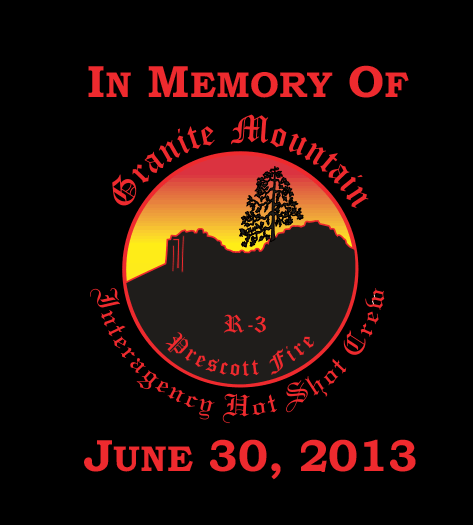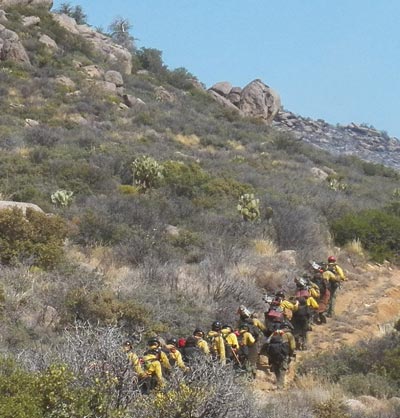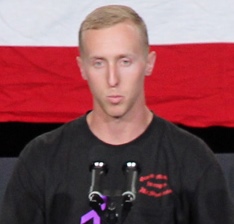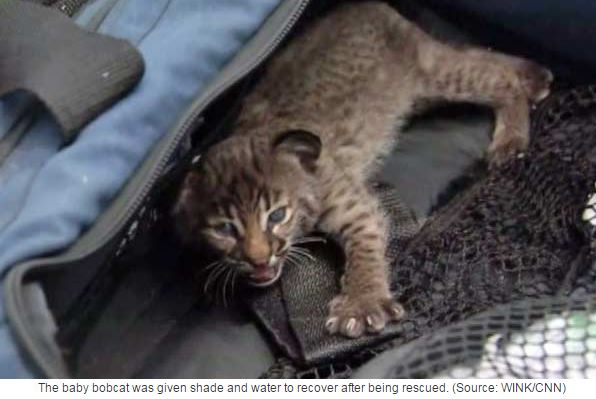 Some of the families of the deceased Granite Mountain Hotshots settled their lawsuit the day before the second anniversary of that tragic day. On June 29 the families of 12 of the crewmembers settled a wrongful-death suit for $50,000 each along with some reforms they hope will help to prevent similar catastrophes. Two years ago today 19 members of the crew were killed on the Yarnell Hill Fire south of Prescott, Arizona when they were entrapped and overrun by a wildfire that later burned into the community of Yarnell, destroying 127 structures.
Some of the families of the deceased Granite Mountain Hotshots settled their lawsuit the day before the second anniversary of that tragic day. On June 29 the families of 12 of the crewmembers settled a wrongful-death suit for $50,000 each along with some reforms they hope will help to prevent similar catastrophes. Two years ago today 19 members of the crew were killed on the Yarnell Hill Fire south of Prescott, Arizona when they were entrapped and overrun by a wildfire that later burned into the community of Yarnell, destroying 127 structures.
The resolution was announced Monday at a news conference. In addition to the $50,000 for each of 12 families, the state of Arizona will give $10,000 to each of the seven families that did not participate in the lawsuit.

The settlement also stipulates that the state will make a “good faith effort” to implement reforms suggested by the families of the hotshots, but their implementation is not binding and will be up to the sole discretion of the agency director.
- The state Forestry Division will ask the National Wildfire Coordinating Group to do a question-and-answer session and a staff ride so that firefighters can better understand what happened that day two years ago.
- The state will recommend additional training for initial attack of new fires.
- State Forestry will volunteer to participate as a testing site for new wildfire technology, including radios and GPS tracking devices. One of the issues on the Yarnell Hill Fire was that it is possible that few if any other firefighters on the fire were aware of the location of the crew and the danger that they were in.
The $220 million lawsuit was settled for a total of $670,000, plus the “good faith” concessions.
The agreement occurred without any testimony from Brendan McDonough, the only survivor from the 20-person crew. Attorneys for State Forestry repeatedly sought his information about the fire under oath, but a deposition never occurred. Mr. McDonough has said he suffers from post-traumatic stress disorder since the fire.

At the time of the fatalities he was in a different location serving as a lookout, providing intelligence to the crew about the location of the fire. The largest remaining question about the Yarnell Hill Fire is why the 19 firefighters left the safety of a previously burned area and hiked through unburned brush where they were overrun by the fire. Nothing in the two official reports shed any light on this important question.
An article in the April 3 edition of the Arizona Republic includes information that was previously unknown to the public. The newspaper reported that Mr. McDonough overheard a radio conversation between the Division Supervisor, Eric Marsh, and Jesse Steed who was temporarily serving as the Hotshots’ crew boss. Supposedly Mr. Marsh who normally was the Crew Boss or Superintendent of the crew, told Mr. Steed to have the crew leave the safety zone and to join him at a ranch.
The question of why the crew was in that location may never be answered, unless Mr. McDonough elaborates on the issue in the book he is working on. In April it was announced that he signed a deal with New York Times bestselling author Stephan Talty to write “the untold story from the lone survivor of the Yarnell Hill Fire”.
Below is an excerpt from a June 29, 2015 article in the Arizona Republic:
Attorney Pat McGroder said the goal of the 12 families was to prevent future tragedies and improve wildland-firefighting safety. He emphasized they were not out to make money and said the minimal compensation and promised firefighting improvements underscore that point.
McGroder had strong words for the federal government, which banned the Blue Ridge Hotshots from talking publicly about what they may have heard over the radios that day.
“At sometime, Mr. McDonough may or may not choose to publicly describe what he saw, what he heard that day,” McGroder said. “The idea that the federal government is withholding information … speaks to the lack of understanding and empathy that they should have for these families. So, we would publicly call for … the national Forest Service to let their people talk.”



